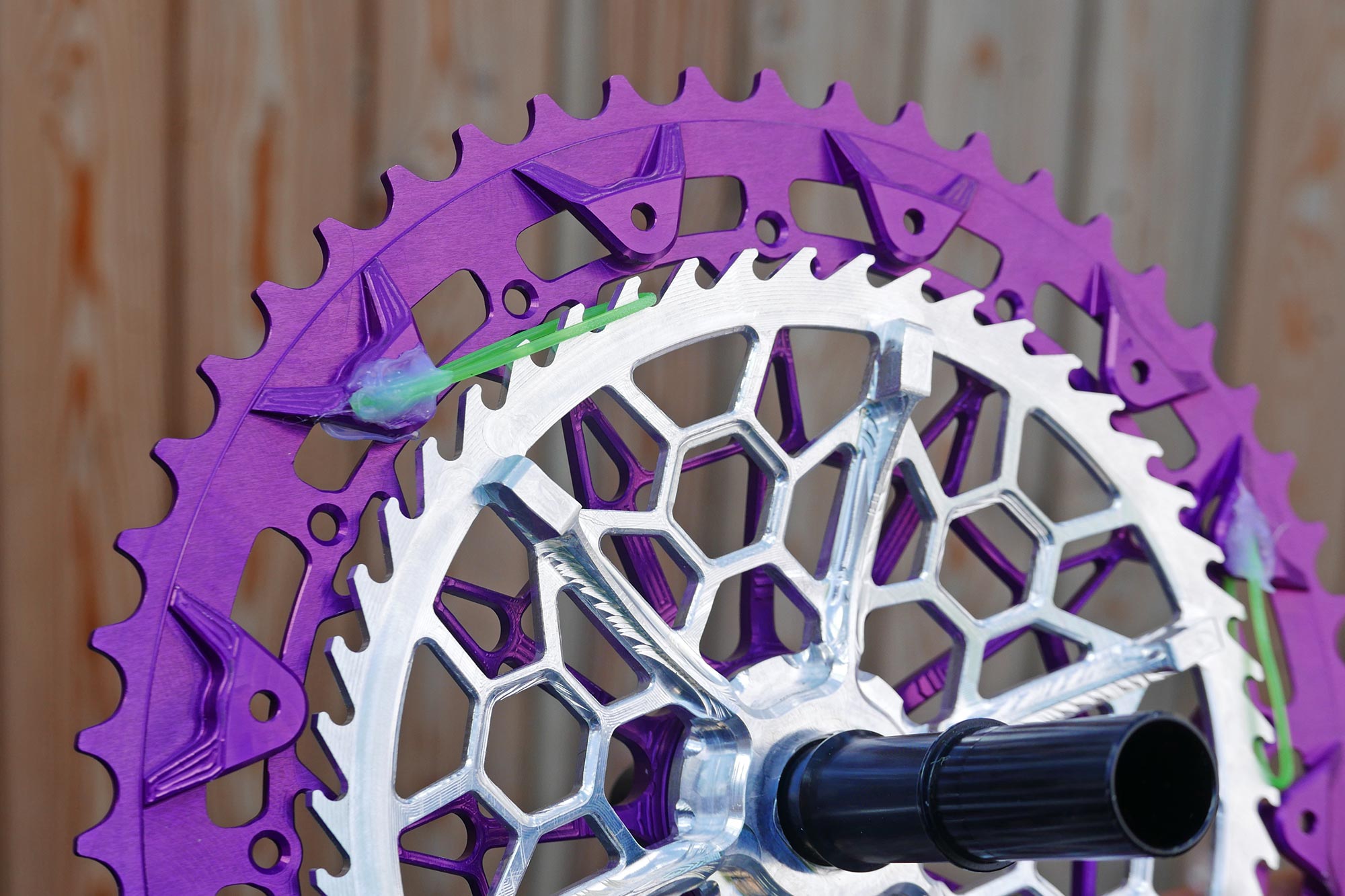Polish hub maker Soul-Kozak’s new LoopsDrive concept is a completely unique solution for creating fast-engagement bike hubs.
While pretty much every geared bicycle’s hub ever made transfers pedal input through compression loads inside a freehub (or freewheel), the LoopsDrive concept uses a series of rings (or loops) pulled in tension to transmit the rider’s power into the rear wheel. And by pulling this point of power transfer out of the tiny environs of the freehub, the Soul-Kozak LoopsDrive promises less drag, improved resistance to dirt, dust & debris, lighter overall weight, and ultra-fast engagement.
Think a minimum of 65 POEs, or as many as 780 points of engagement with no reduction in durability. Or it could even go as high as 1500 POEs when ultra-fast engagement were a priority!
Soul-Kozak LoopsDrive alternate freehub concept
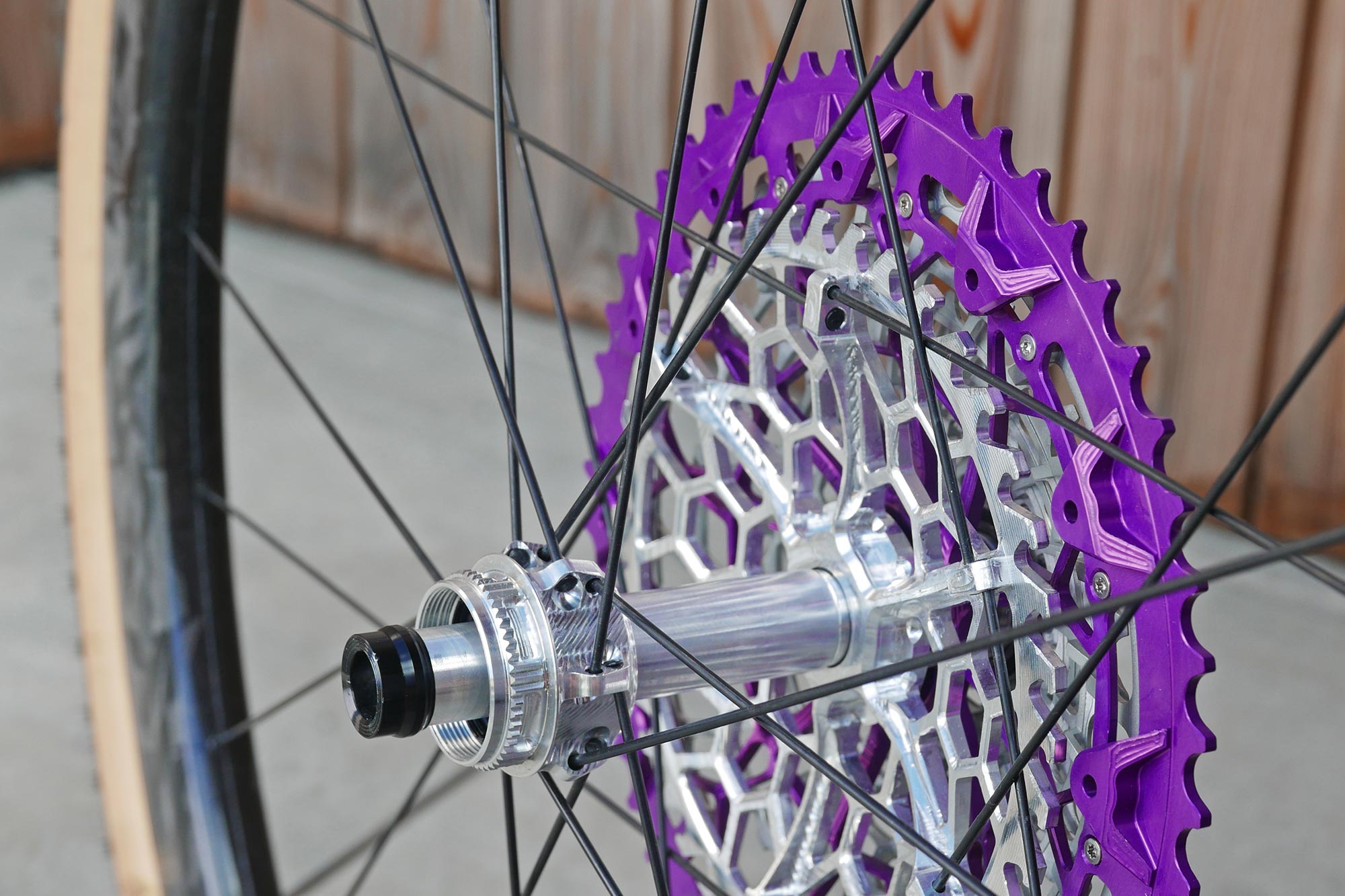
The trick is, LoopsDrive is just a concept. Soul-Kozak has patented the idea. And they’ve created a working prototype that combines elements from several different cycling component makers. But for the LoopsDrive idea to really take hold, Soul-Kozak needs even more hub, cassette, and wheel manufacturers to get on board.
OK, so what really makes this idea special?
What’s new?
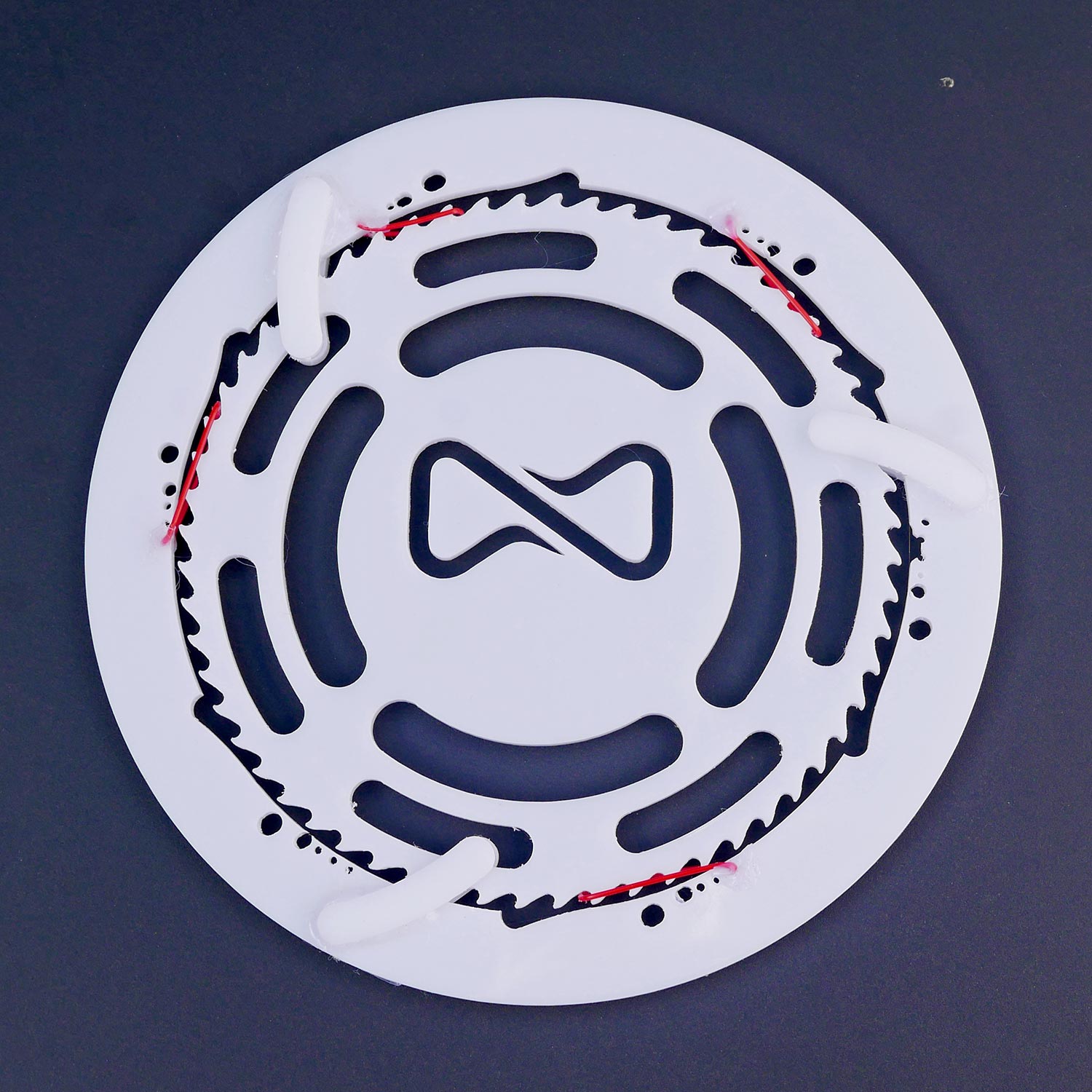
The LoopsDrive freehub clutch really comes down to two basic concepts:
- tension vs. compression, and…
- separating hub/axle sealing and the engagement mechanism vs. making everything tiny to fit inside a sealed hubshell
A freewheeling drive system in tension
Pretty much every freewheeling system works by using a mechanism that jams in between the separately spinning outer hubshell that is laced into the wheel, and the freehub body that holds the cassette. Whether it’s a series of pawls or a ratchet mechanism, teeth slam together transferring the force of your pedal input via compression from the chain/cassette to the hub/spokes/rim/tire.
The LoopsDrive solution hangs loop springs (green) off the biggest cog of a cassette (purple) that then catch hooks machined into an externally toothed ring (silver) fixed to the driveside of the rear hub shell. As the cyclist coasts ahead, the loops glide over the top of the hooks. And when the rider pedals, these gently spring-loaded loops get caught by the hooks creating a load path (silver-green-purple) in tension to transfer pedal input to forward motion at the ground.
In this system, the loop in tension (green) can be theoretically made from a relatively low-cost carbon composite or plastic material that works well in tension. And they could be cheaply and easily replaced as they wear out over time.
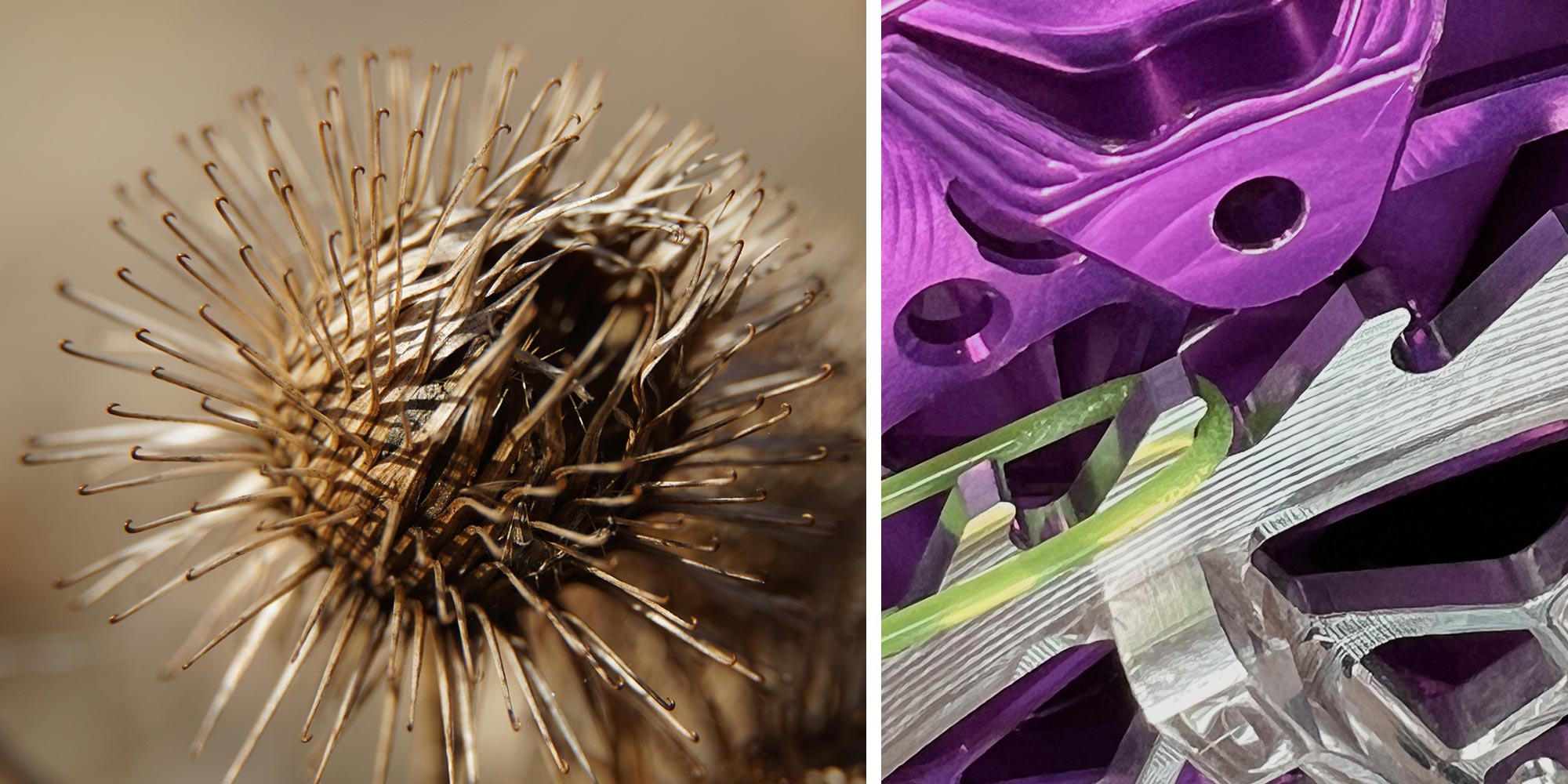
Soul-Kozak’s inspiration for LoopsDrive came from nature, in the humble Burdock’s hooked burrs that inevitably get stuck to your clothing. Much like how they inspired Velcro, the hook and loop interface can be simple and strong.
(Just to clarify, the mock-up model in the video above has the silver teeth facing the opposite direction of a bicycle drivetrain. All the other photos that I took of a mock-up model and the rideable prototype wheel have these teeth in the opposite direction to propel a bike forward and coast forward. I hope that makes sense.)
A freewheel mechanism outside of the hub
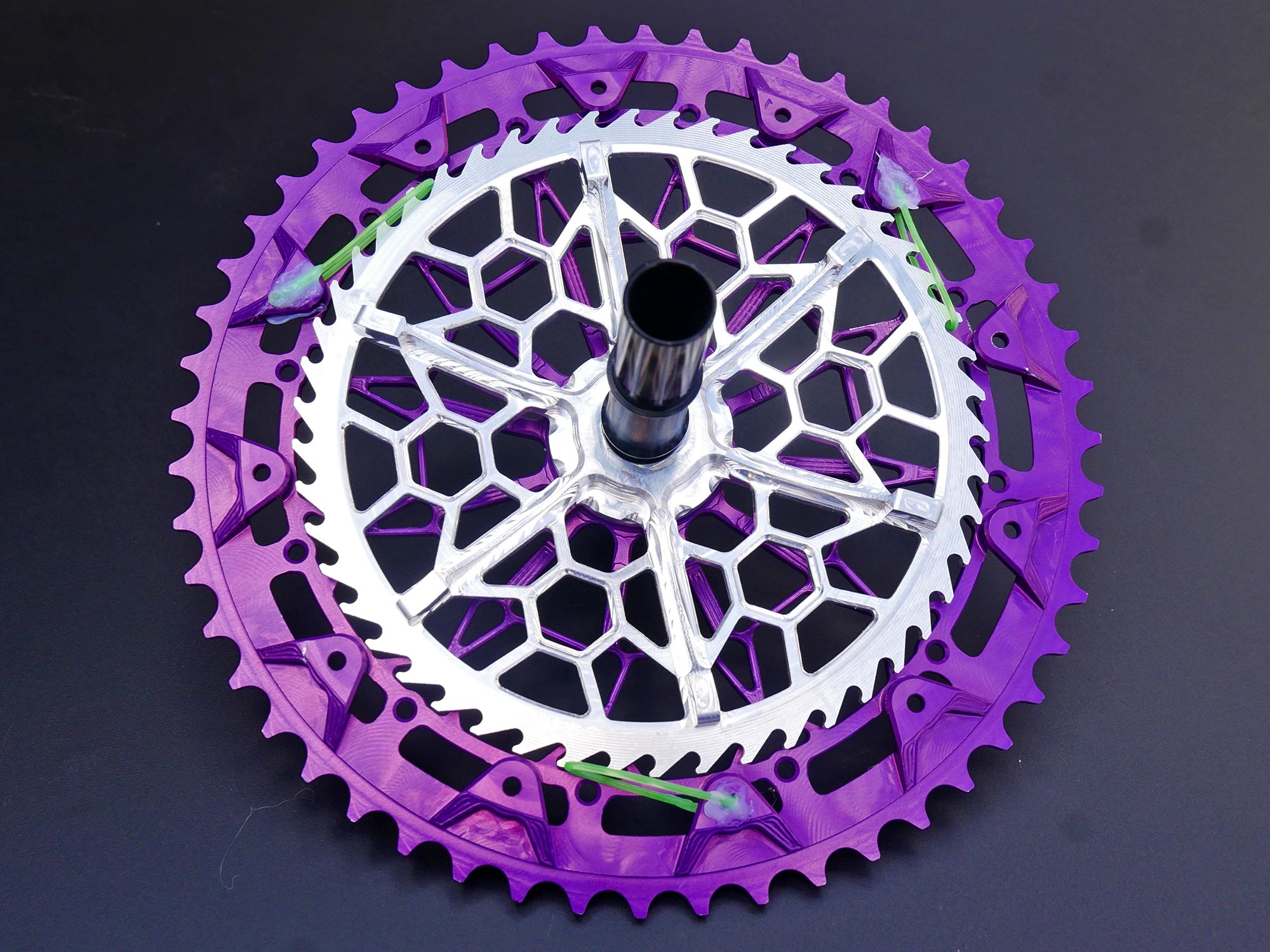
Soul-Kozak’s overarching idea behind the LoopsDrive uni-directional clutch mechanism is separating the freewheel function from the bearing and sealing precision needed to make a bicycle wheel spin smoothly in all conditions.
A bike hub and its bearings needs to be manufactured to super tight tolerances to ensure wheel stiffness, reliable handling, and smooth operation. Then, those bearings must be precisely sealed, both so they are durable, but also so there is no unnecessary drag added to the system. Fitting a freewheeling clutch into the hub means everything has to be super tiny to fit in and around the bearings. And all of those tiny parts need to be incredibly well sealed away from the elements. (Have you looked inside and seen how tiny the springs & pawls in most hubs are?)
By moving the clutch mechanism about 10cm away from the axle, the teeth of the Soul-Kozak LoopsDrive system can be much bigger
The LoopsDrive 52 teeth in this mockup are about 5mm tall vs.1mm tall teeth in my DT 36SL Ratchet EXP hub. And spaced 1cm apart vs. 3mm.
Those much bigger teeth (even with ~1.5x as much engagement) mean that the level of manufacturing precision required is much lower. And an easier-to-machine material can be used – aluminum vs. steel, in this comparison. But carbon or composite structures are also possible.
A clutch exposed to the elements?
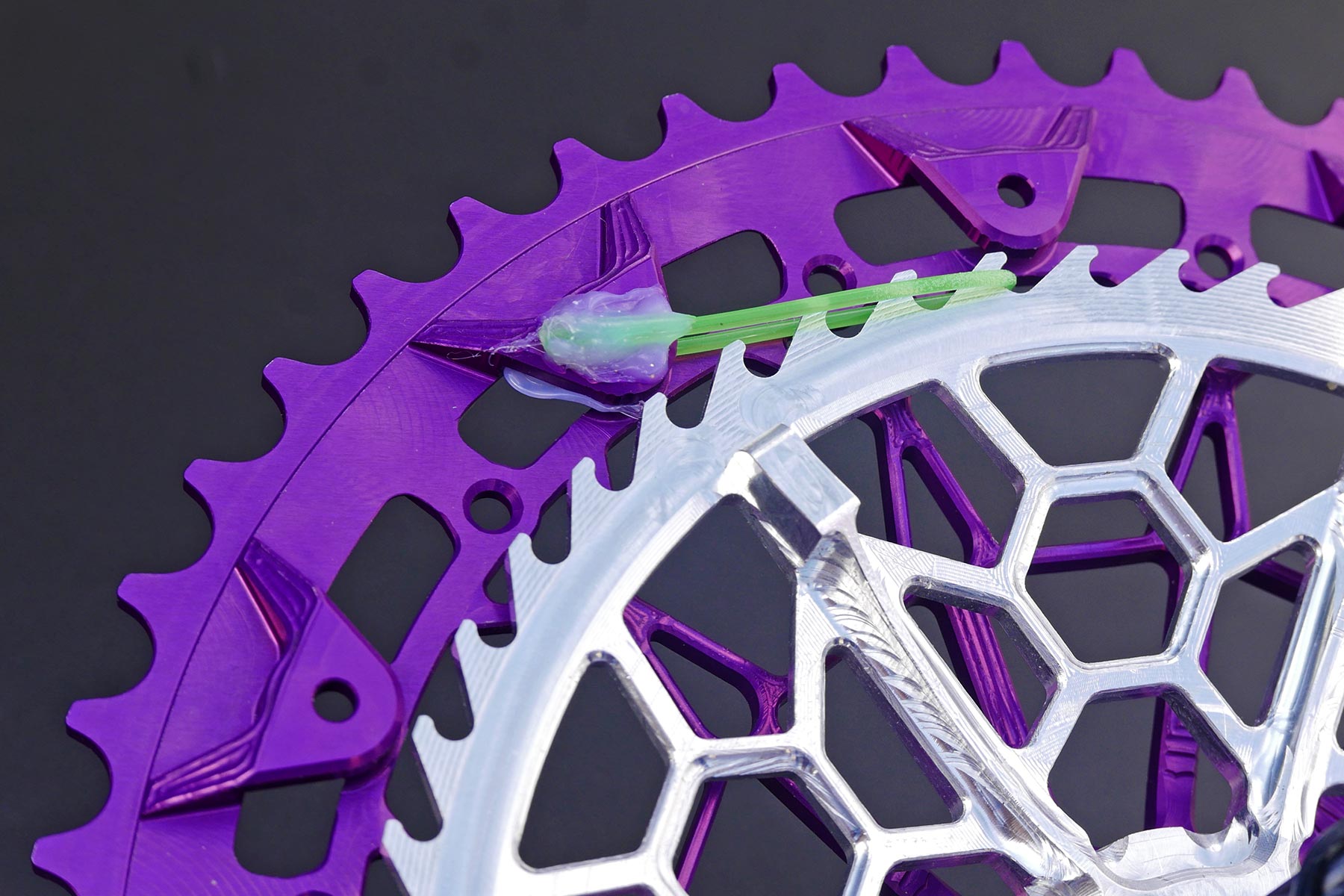
Soul-Kozak assures that the open LoopsDrive system is designed in such a way that it will be self-clearing of debris. Again they look to nature and the flower cluster of hazel shrubs for a light open structure. That sounds a little bit like a scary concept when we are talking about a freehub clutch exposed to the elements. But the loop interface does not require lubrication, so it won’t attract grime. And putting it next to the cassette-chain interface is a quick reminder that this system already works quite well, fully exposed.
Sure, your cassette will get dusty, dirty, or even super grimy depending on how you lube your chain and what conditions you ride in. But in reality, it works as self-clearing/cleaning most of the time. And is easy to clean further whenever needed.
What does high-POE actually mean? Where does it make sense?
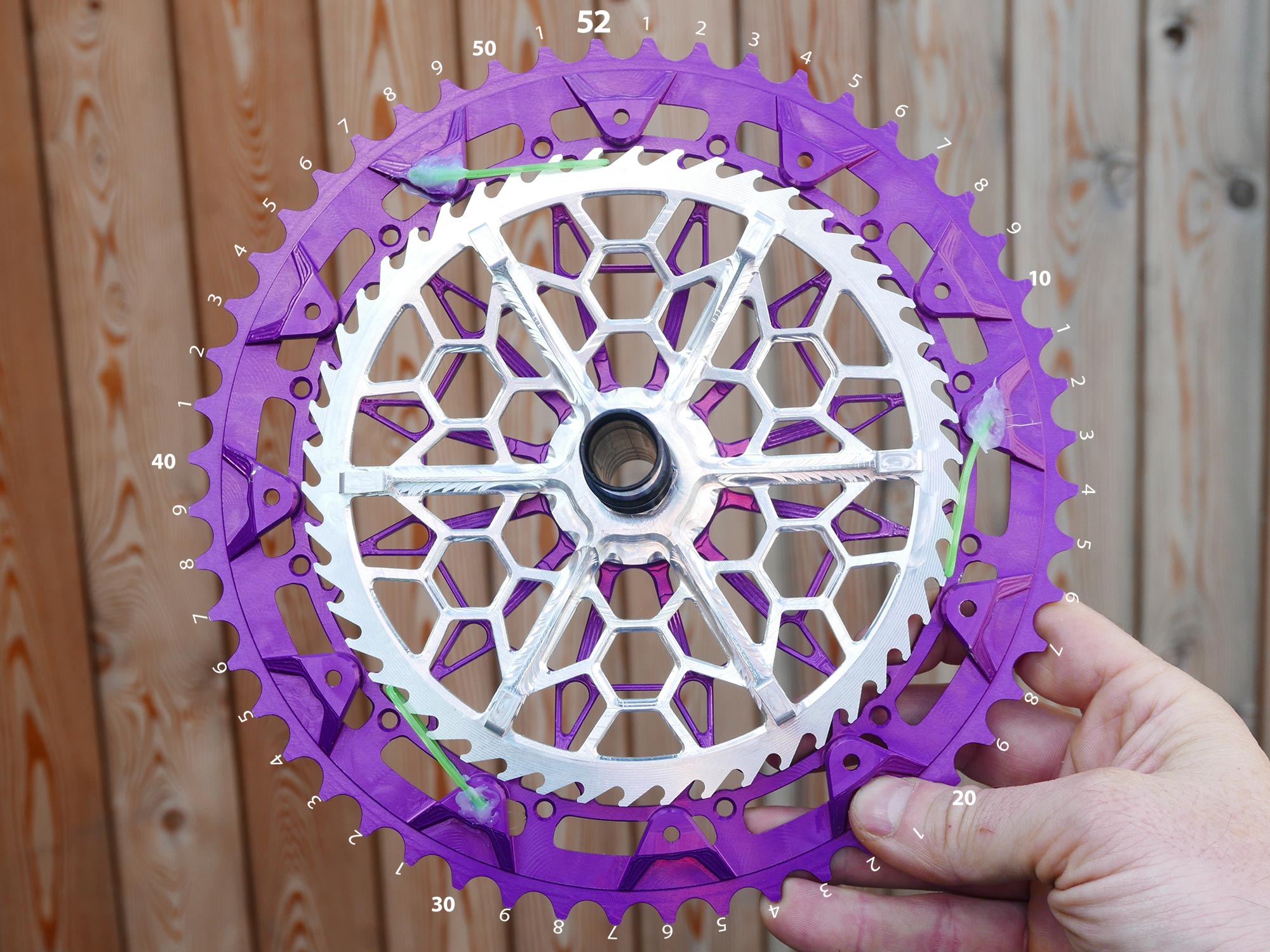
Pretty much every high-end hub maker touts how fast their hubs engage. Either talking about how many points of engagement (POE) they have (often, but not always, the same as number of teeth) or their angle (°) of engagement. The general idea is: faster engagement means a more responsive feel between your pedals and the power delivered to the ground through the rear wheel tire. Faster engagement is great when you want to get a bike up and over an obstacle (most often off-road) with a quick partial turn of the cranks.
Soul-Kozak says their LoopsDrive will come in 65 POE as a baseline with 65 teeth. 195 POE with the same number of teeth but 3 sets of loops offset from each other. 780 POE is also possible with 12 offset loop positions, or even 1500 POE with a 125T ring and 12 offset loops. (This mock-up model features 52 teeth, and 156 POE with 3 offset loops.)
Industry Nine’s latest Hydra hubs tout 690 POEs. Hope’s Pro 5 delivers 108 POEs. DT Swiss’ latest DEG hubs top out at 90 POE (more on those very soon!) And Chris King RingDrive delivers 72 POEs. But a lot of regular high-quality hubs hit a sweet spot around 35 points of engagement.
But you see, faster isn’t always better – even here in Soul-Kozak’s LoopsDrive concept. First off, ultra-fast hubs exaggerate the feeling of pedal kickback in many full-suspension mountain bike designs. That’s the reason OChain systems exist in gravity mountain bike racing. Plus, more POEs typically adds drag to the hub. And generally, squeezing more POEs inside a hub shell will reduce long-term durability.
How does high-POE measure out on the trail?
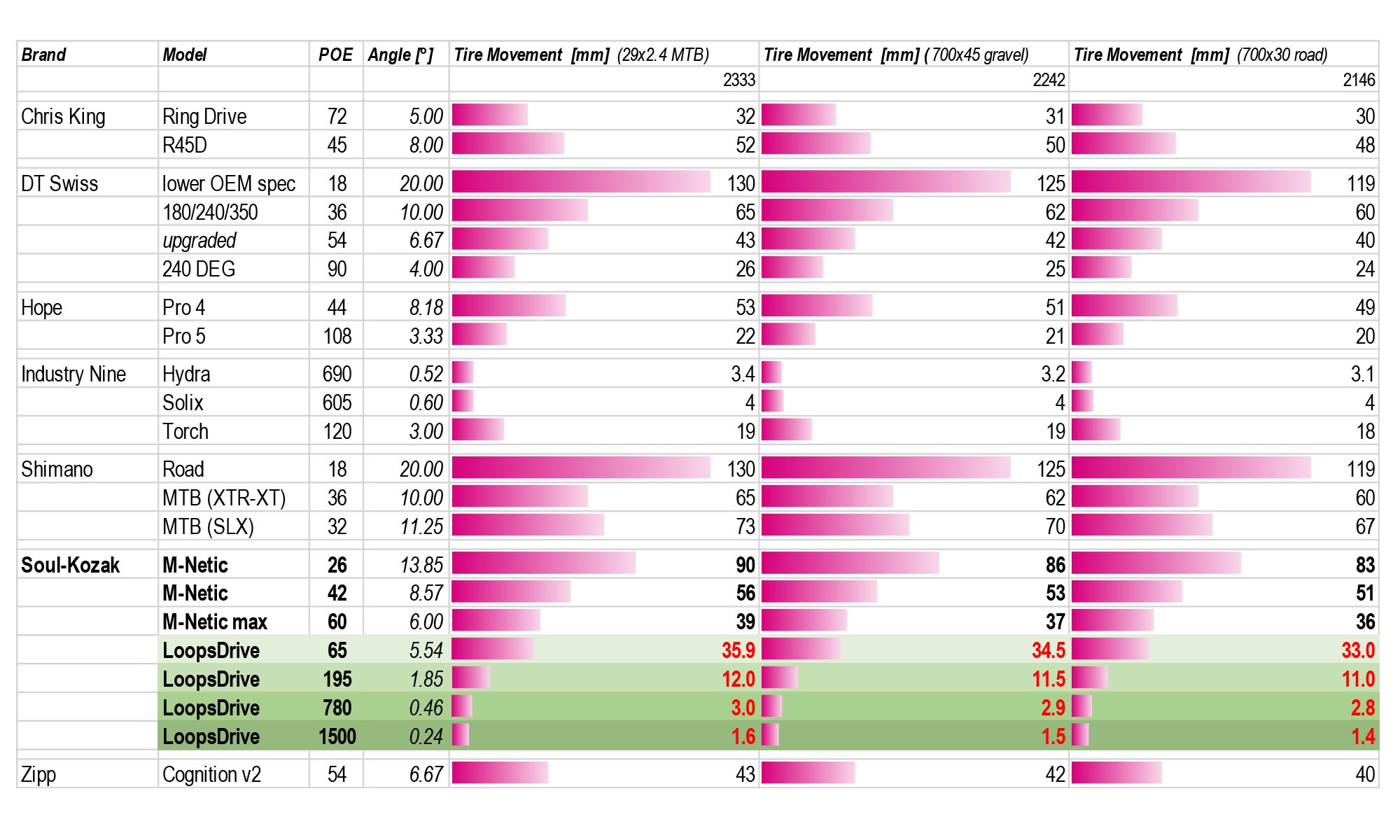
Let’s start with the middle-of-the-road 36T engagement that’s common on premium hubs like Shimano XTR or DT Swiss 240s. If we talk about a 29er mountain bike with a 2.4″ tire, those 36 POEs translate to 65mm/2.5″ along the ground. That’s how far your tire could roll back before your freehub would engage. Or If you’re looking at a 170mm crank arm, that means your pedal could move down 30mm/1.2″ before the wheel would start to move forward.
If you are trying to get over a sharp-edged or slippery obstacle on the ground, that might not cut it. Imagine getting on top of a small wet log or big slick root 100mm/4″ in diameter where you come to a stop. And your rear wheel could roll back 65mm? You likely would have a hard time getting up and over it. On the other hand, the 65 POE LoopsDrive wheel could only roll back 36mm or let your crankarm drop 16mm. Tripling that 195POEs, the tire could move back just 12mm or crankarm drop just 5mm. Either of which could make it easier to get up an over something on the trail.
Interestingly, it looks kind of like diminishing returns in my head the higher engagement gets. The Industry Nine Hydra hub cuts tire movement to just 3.4mm, and pedal movement to just 1.5mm. LoopsDrive’s 780 POE option would be 3.0mm & 1.4mm, respectively.
The jump from 36 POE to 65 or 195 are all pretty big. But I doubt many riders would feel any benefit going from ~200 POEs to 690, 780, or even Loops’ theoretical top out at 1500 POEs.
OK, so what happens now with Soul-Kozak LoopsDrive?
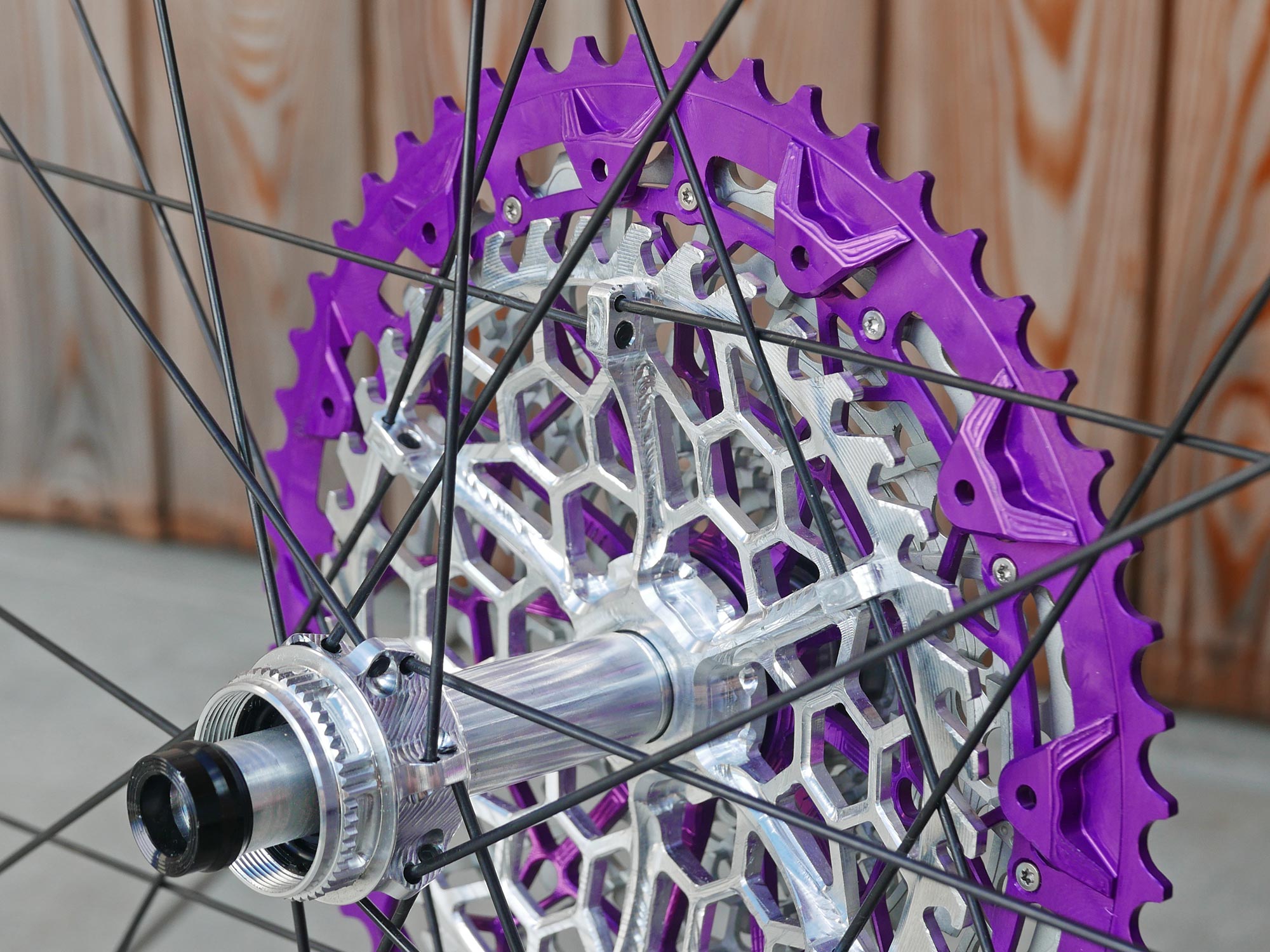
That’s the million-dollar question that I asked Soul-Kozak about their new LoopsDrive tech. Right now, this is just a concept. Albeit, an interesting idea in my mind.
Soul-Kozak has a patent pending on the LoopsDrive concept. But this is not a product they want to produce on their own. They could in theory machine all the hooked aluminum hubs, make the loops themselves, and even machine the matching cassette if they needed too. And the hub maker hinted that we’ll likely see a more developed solution from them, as early as this summer into autumn.
But Soul-Kozak knows that it would be much more efficient, and LoopsDrive would become more widely-adopted, if they could get more brands on-board.
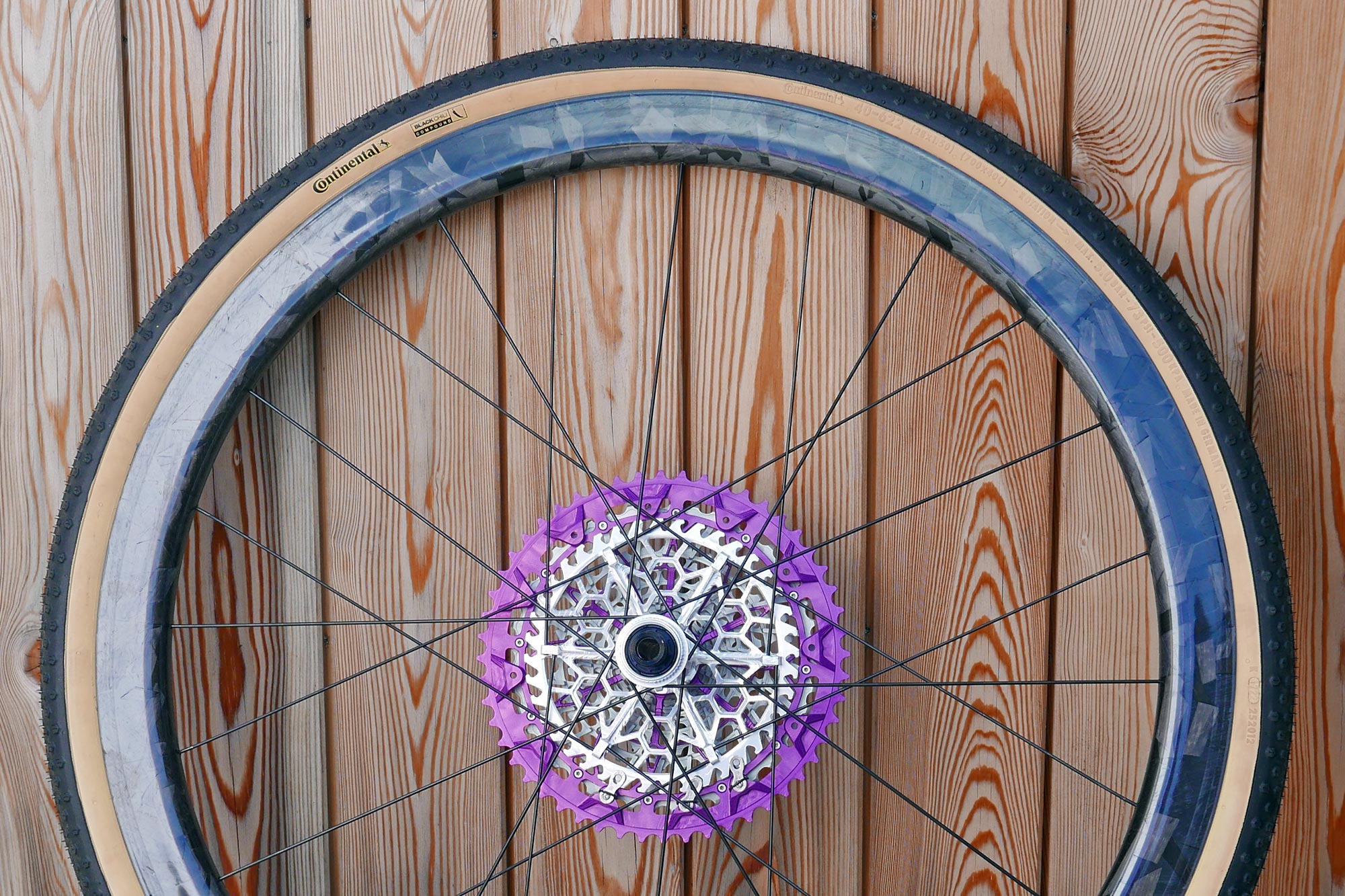
Wheels are already a mix of manufacturers, so that doesn’t seem like a huge stretch. This rideable prototype gravel wheel is already made up of at least 8 different elements produced by several different manufacturers. Soul-Kozak’s silver centerlock disc hub with the toothed ring machined into an ultra-high driveside hub flange. Soul-Kozak custom-machined purple big cog that supports the loops bolted to a modular silver Garbaruk cassette. Then, straight pull stainless spokes and hidden alloy nipples from Sapim, laced to a third-party open mold carbon rim. Lastly topped off with a Continental gravel tire and butyl inner tube.
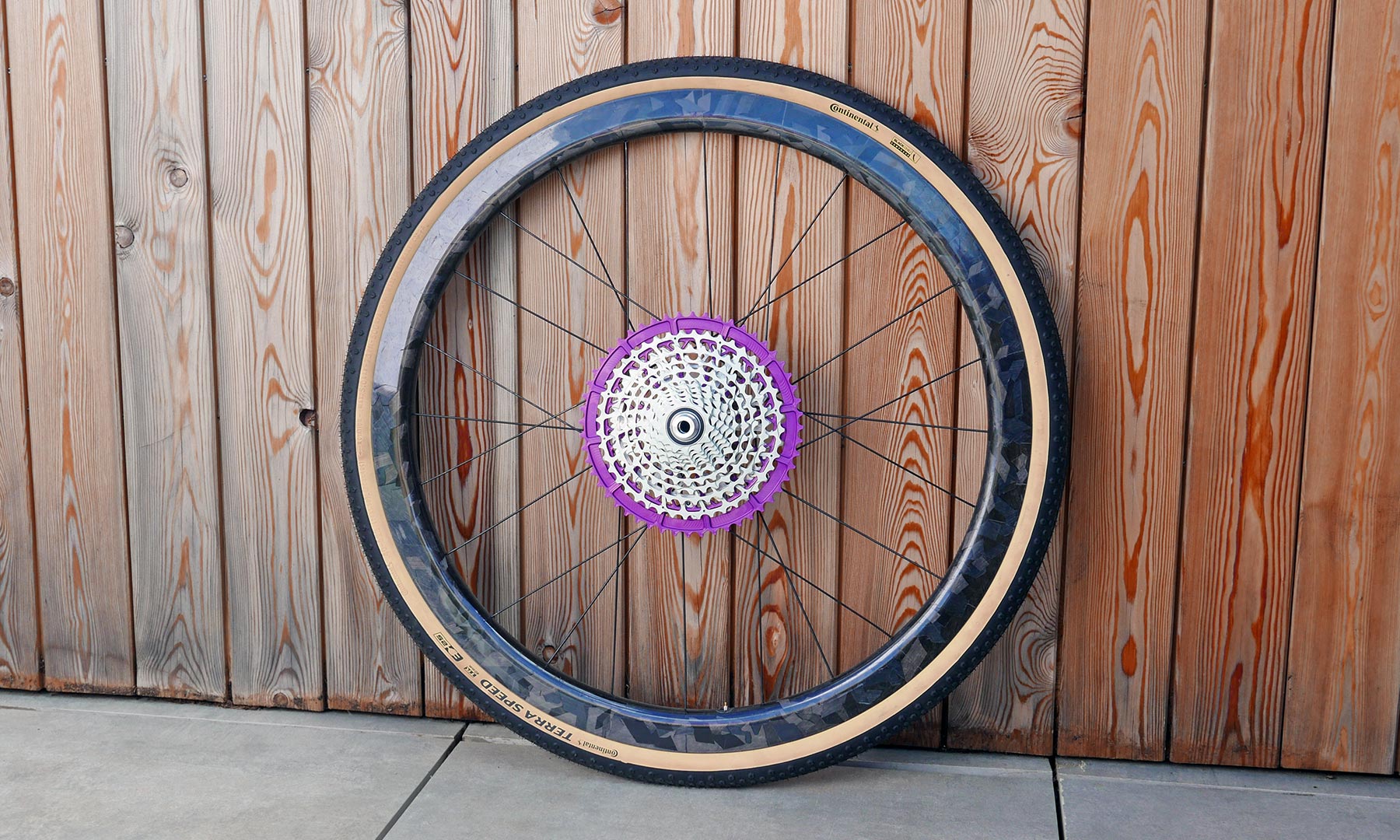
They then hope to license their LoopsDrive patent to other hub and cassette manufacturers. That way they could get more people to try the concept. Soul-Kozak explains LoopsDrive manufacturing could be both simple/low-cost or with more precision for higher-end performance. Maybe anything from a low-cost city bike wheel to a premium mountain bike racing setup.
Now we just have to wait and see if anyone joins in on the fun.
